
|
Vol 71 |
Page 10 |
Privacy Policy | Editorial Policy | Profit Policy | Join the Association | List of Members | Contact us | Index | Links
Back Go to page: 1 2 3 4 5 6 7 8 9 10 11 12 13 14 15 16 17 18 19 20 Forward
Contents.
2 Sqn's last combat flight in Malaysia.
Double ceremony at Townsville.
F-16's replacement will be pilotless.
Porn is definitely catching on.
Pre D-day's Operational Fortitude.
The F-16's replacement won’t have a Pilot at all.
The U.S. Air Force plans to have an operational combat drone by 2023. The service plans to build out a family of unmanned aircraft, known as Skyborg, capable of carrying weapons and actively participating in combat. Skyborg will be reusable but could be sacrificed in combat if necessary. The Air Force’s goal is to build up a large fleet of armed, sort-of disposable jets that don’t need conventional runways to take off and land.
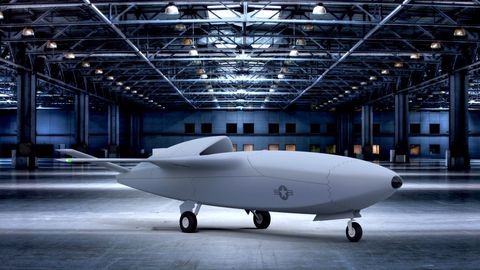
The Air Force expects to have the first operational Skyborg aircraft ready by 2023. It will be available with both subsonic and supersonic engines, indicating both attack and fighter jet versions. The basic design (or designs) will likely be stealthy, carrying guided bombs, air defence suppression missiles, and air-to-air missiles inside internal weapons bays. Interesting the Air Force is considering Skyborg as a replacement not only for the MQ-9 Reaper attack drone but early versions of the F-16 manned fighter.
HERE is a video produced by Boeing of their Loyal Wingman UAV, which is expected to join the Skyborg competition.
Skyborg was originally described as an artificial intelligence capable of being fielded two ways. The first would be as the software equivalent of R2D2 in the rear of an X-Wing fighter, a flying co-pilot designed to assist the human pilot by taking on minor, but still important tasks. This would free up a human fighter to concentrate on flying the jet fighting the enemy.
Skyborg AI was also supposed to act as the brain for the Air Force’s first combat drones, drones that could fly alongside fighter jets and act as a “loyal wingman” to a crewed fighter. Such a jet could act as the bait in an ambush, carry extra weapons, or perform any number of roles. Skyborgs could also fly high risk combat missions, such as hunting enemy air defence systems and attacking heavily defended ground targets, without risking a human pilot. Other missions might include escorting unarmed aircraft such as tankers, transports, and AWACs planes, and aerial reconnaissance. Of the two Skyborg concepts, the AI-powered drone seems to have priority right now.
Skyborg is designed to be an “attritable” (one use only) airplane designed to fly a mere handful of miles compared to fully loaded jets like the F-35A. This keeps costs down, allowing the Air Force to buy large numbers of the plane. Keeping Skyborg cheap also makes the jets expendable under certain circumstances. A Skyborg pilot might fly a mission against ground targets and expend all of the drone’s weapons--only to see a ballistic missile launcher armed with chemical warheads lumber out of a tree line below. Rather than wait for armed reinforcements to arrive on the scene the pilot would have the option of using his drone as a kamikaze weapon to destroy the launcher.
HERE is another candidate for Skyborg, the Kratos Defense XQ-58 Valkyrie.
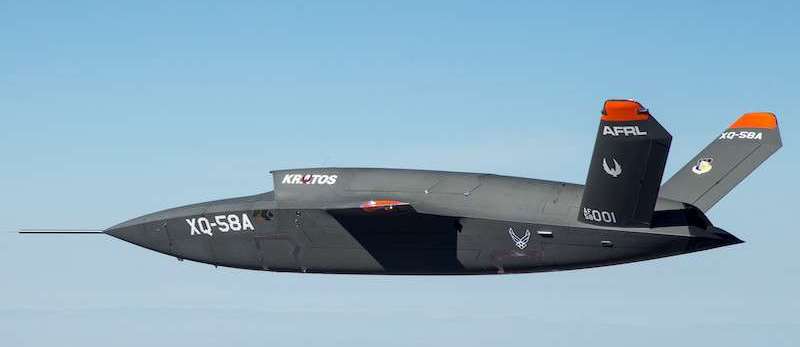
Unmanned, a Skyborg could take many more risks than a manned aircraft, including acting as a decoy to divert enemy missiles away from the AWACS and its fifteen person crew. Meanwhile, the manned jets that might have performed the escort mission are free to go on and fly other missions more suitable for crewed aircraft.
Another major feature of Skyborg will be the ability to operate independently of traditional air bases. Air base runways are typically two miles long or longer and are vulnerable to enemy attack. Skyborg will likely be launched from rails, lofted into the air by small booster rockets. Once airborne the drone’s turbine engine would kick in, allowing for powered flight. Its mission complete, a Skyborg drone would fly to a designated area, cut its engine, pop a parachute and float to the ground. Air Force teams would recover the drones and prepare them for the next mission.
Skyborg first went public in 2019 but the Air Force believes it can have
operational jets by 2023. Such a short development schedule was common
in the 1950s but unheard of by today’s standards. The F-35 Joint Strike
Fighter, on the other hand, took two decades to go from the drawing
board to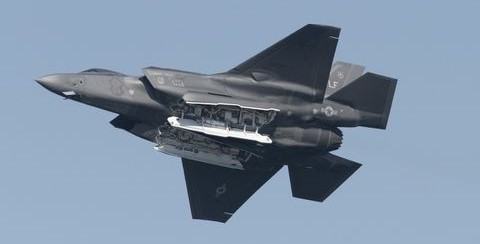 the runway, during which time the strategic environment changed
dramatically. By the time the F-35 was fielded in large numbers some
decisions, such as the jet’s relatively short range, went from being
acceptable trade-offs to definite shortcomings. A shorter development
time means the Air Force could quickly develop new drones capable of
addressing new threats and strategic realities.
the runway, during which time the strategic environment changed
dramatically. By the time the F-35 was fielded in large numbers some
decisions, such as the jet’s relatively short range, went from being
acceptable trade-offs to definite shortcomings. A shorter development
time means the Air Force could quickly develop new drones capable of
addressing new threats and strategic realities.
Unmanned jets like Skyborg promise to remake the U.S. Air Force and other air forces. Manned aircraft have become increasingly large, difficult to develop, and expensive. This in turn means the Pentagon can afford fewer jets, ultimately leading to a smaller Air Force. Unmanned jets, on the other hand, are smaller, easier to develop, and cheap--allowing the Air Force to buy lots of them.
There’s a lot to like about Skyborg. The drone will grow the fighting arm of the U.S. Air Force, move air power away from airfields, fly alongside fighter jets and escort traditionally undefended assets like the E-3 Sentry and it promises to do it all affordably.
If the Air Force really can get Skyborg into the game by 2023 it will dramatically change the shape of aerial warfare.
Guys – I need your help. I’m in the middle of an argument with my wife and she just told me that I’m right.
What the hell do I do next?
Smart thinking.
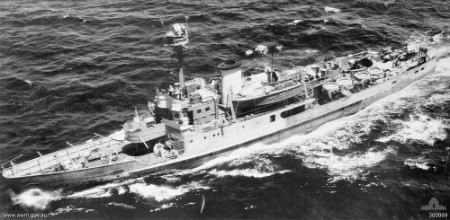
In 1941 and the Japanese suddenly attacked Dutch East Indies, as well as other colonies in southeast Asia. The Dutch minesweeper HNLMS Abraham Crijnssen found itself suddenly in danger of the sophisticated Japanese aircraft and patrolling ships.
The remaining Dutch Navy was ordered to link up with the Australian navy, but the Abraham Crijnssen was stuck all alone in Indonesia, armed with a single 76mm gun turret and two 20mm auto cannons. It had no chance to fight off really anything, so the crew decided to camouflage the entire ship as an island. They cut down a bunch of jungle foliage and painted what they couldn’t cover as sand or rock.
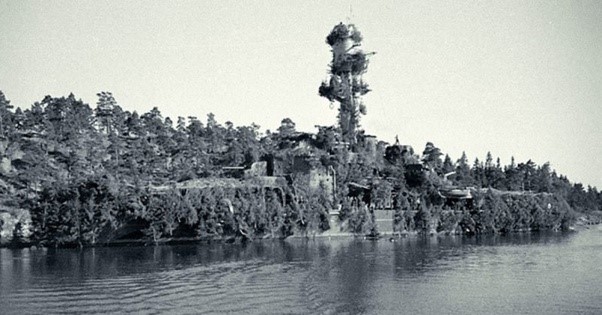
They only sailed at night, because during the day, the water ripples would have been visible from the air. During the day they simply anchored close to shore appearing as a small island - one of many along the Indonesian shore.
She arrived in Australia in March 1942, without being detected by the Japanese.
Growing old should have taken longer.
Operation Fortitude.
Operation Fortitude was the code name for a World War II military deception employed by the Allied nations as part of an overall deception strategy (code named Bodyguard) during the build-up to the 1944 Normandy landings. Fortitude was divided into two sub-plans, North and South, with the aim of misleading the German High Command as to the location of the invasion.
The Allies needed to land in Europe. The obvious place was the Pas-de-Calais. It was the shortest route (great for logistics) and had ports in abundance. It was the route Hitler would have used had Sea Lion ever been seriously considered. However, the Allies knew two things:
-
The short route would hit the most fortified coastline in the world. The Allies had attacked fortified ports before and it had been devastating. Normandy was attractive and they would figure out the logistics (floating, makeshift ports and more!).
-
Hitler expected the Pas-de-Calais, but without a troop build-up and with the presence of one aimed at Normandy, Hitler would have been able to concentrate his forces in the right place.
After the 6 June 1944 invasion, the plan was to delay movement of German reserves to the Normandy beachhead and to prevent a potentially disastrous counterattack. Fortitude's objectives were to promote alternative targets of Norway and Calais. The planning of Operation Fortitude came under the auspices of the London Controlling Section (LCS), a secret body that was set up to manage Allied deception strategy during the war, however, the execution of each plan fell to the various theatre commanders; in the case of Fortitude, it was Supreme Headquarters Allied Expeditionary Force (SHAEF) under General Dwight Eisenhower. A special section, Ops (B), was established at SHAEF to handle the operation and all of the theatre's deception warfare. The LCS retained responsibility for what was called "special means", the use of diplomatic channels and double agents.
The idea was to put a fake army there in the two “pretend” areas, balloon tanks and so forth. Initially, many thought the idea was absurd. Even if they fooled the Germans for a time, surely some spy would discover the truth? Why waste time and resources on such an absurd ruse?
But they went ahead with the idea.
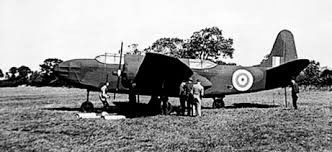
The deception was brilliant. They faked it all. They made inflatable fake aircraft and tanks and fake tank tracks, covered and camouflaged fake artillery and installations and moved it all around to fake mobilization and drilling. They even sent real and fake units on marching drills and made sure their concentrated presence was known.
They even sent Pattern there so the Germans would be doubly convinced, as they all thought Patton would be the fighting general to lead the invasion.
The Allies developed a number of methodologies which were referred to as "special means". They included combinations of physical deception, fake wireless activity, leaks through diplomatic channels and double agents. Fortitude used all of those techniques to various extents. For example, Fortitude North relied heavily on wireless transmission (the Allies thought that Scotland was too far for German reconnaissance aircraft to reach) and Fortitude South used the Allies' network of double agents, as well as:
-
Physical deception: to mislead the enemy with non-existent units by fake infrastructure and equipment, such as dummy landing craft, dummy airfields and decoy lighting.
-
Controlled leaks: information would pass through diplomatic channels, which might be passed on via neutral countries to the Germans.
-
Wireless traffic: wireless traffic was created to simulate actual units to mislead the enemy.
-
Agents: Using German agents controlled by the Allies through the Double Cross System to send false information to the German intelligence services.
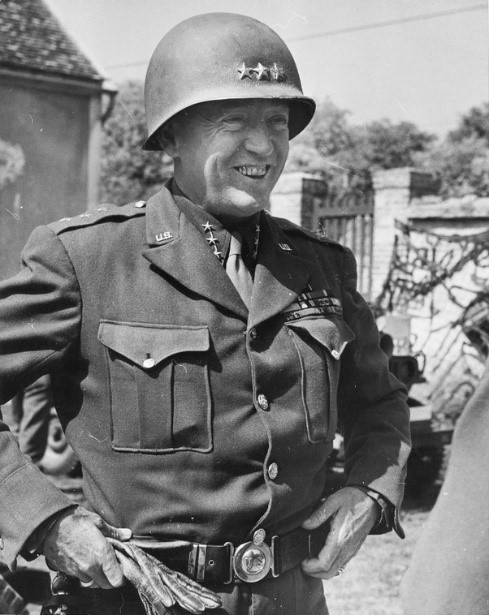
-
Visibility: Public presence of notable staff associated with phantom groups such as FUSAG, most notably the well-known US General George Patton.
Double agents
One of the main deception channels for the Allies was the use of double agents. B1A, the Counter-Intelligence Division of MI5, had done a good job in intercepting all of the German agents in Britain. Many of them were recruited as double agents under the Double Cross System. These were the three most important double agents during the Fortitude operation:
-
Juan Pujol García (Garbo), a Spanish citizen who managed to get recruited by German intelligence, sent them abundant but convincing disinformation from Lisbon until the Allies accepted his offer and he was employed by the British. He had created a network of 27 imaginary sub-agents by the time of Fortitude and the Germans unwittingly paid the British Exchequer large amounts of money regularly, thinking they were funding a network that was loyal to themselves. He was awarded both the Iron Cross by the Germans and an MBE by the British after D-Day.
-
Roman Czerniawski (Brutus), a Polish officer who ran an intelligence network for the Allies in occupied France. Captured by the Germans, he was offered a chance to work for them as a spy. On his arrival in Britain, he turned himself in to British intelligence.
-
Dušan Popov (Tricycle), a Yugoslav lawyer, whose flamboyant lifestyle covered his intelligence activities.
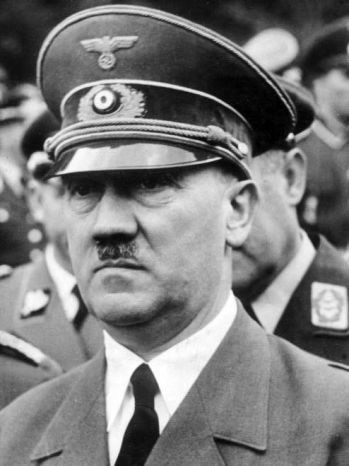
The operation was so convincing that, even after the initial attacks in Normandy and hours after Hitler learned of them (his staff didn’t wake him till late), Hitler was convinced Normandy was a feint. It made no sense. The pass was much closer and removed the thousand and one pitfalls associated with further sea deployment. There was not sufficient infrastructure for logistics in Normandy (he didn’t count on the Allies building it in real time).
Once Hitler realized Normandy was the real invasion, it was far too late. Troops who might have made a difference were too far North and the tanks were too far North and East.
The secret of happiness is a good sense of humour
and a bad memory
Are they out there?
The Pentagon's new UFO Task Force shows UFOs are being taken seriously. The US’s plans to set up a unit to look at UFOs shows it is "clear" that the US military is now taking unknown sightings seriously. The ridicule factor has gone and the US wants to know what it is that is in their airspace.
Is it China, is it Russia, is it New Zealand ?? or is it something else?
Recently the Pentagon announced it was setting up the Unidentified Aerial Phenomena Task Force (UAPTF).
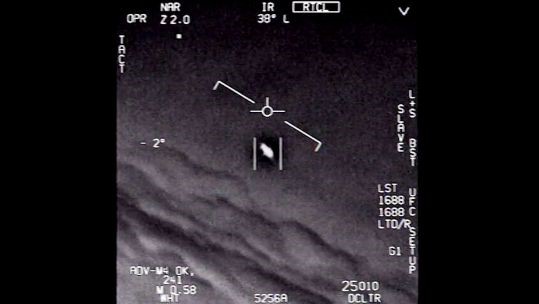
Concentrating on investigating incursions into military training ranges and airspace, the Pentagon said the aim of the unit is "to improve its understanding of, and gain insight into, the nature and origins of UAPs". "The mission of the task force is to detect, analyse and catalogue UAPs that could potentially pose a threat to US national security," the Pentagon said.
It comes after the Pentagon's official release of footage (Click the pic above) in April that appeared to show two unidentified flying objects. Filmed from military jets, the US Navy videos, dated November 2004 and two from January 2015, had already been leaked years earlier. Observers said credibility was added to the footage after the US Government officially published it, while the Pentagon has gone further with the formation of the new unit.
Sceptics of the new task force say it is not new at all, but instead the renaming of a unit that has been operating since 2012.
Porn is catching on.
In the early 1980s, when I was barely a teenager, a friend invited me over to his house to take a peek at his dad’s secret stash of porn. At the time, it felt like striking oil. Porn was still a finite resource, something you only had if you were lucky or knew where to dig.
It’s the same emotion I had while reading Pornhub’s year in review for 2018. It’s a statistical smorgasbord of data that the hugely popular website, ranked seventh in the world, beating out Instagram, Wikipedia, and Reddit.

Over the years, we’ve learned fascinating details about how people consume dirty videos, from the 1424 percent increase in porn watched on mobile devices since 2010 to “fidget spinner porn” becoming inexplicably popular a few years ago. But the most gobsmacking revelation was this: In 2018, Pornhub transferred 4,403 petabytes of data.
Let’s repeat that number, just so we’re all clear it isn’t a misprint or typo: 4,403 petabytes. Not megabytes or gigabytes or terabytes. Pet-a-bytes. A Petabyte is 1,000,000,000,000,000 bytes. That’s on helluva lot of bytes.
The human brain can store around 2.5 petabytes of memory data. So that means Pornhub has the brain capacity of nearly 1,800 people. That volume of petabytes is either staggering or just about right, depending on who you ask.
The co-author of A Billion Wicked Thoughts, a 2012 study of internet porn habits, points out that it isn’t such a preposterous amount when you consider that all those petabytes are really the data that’s being transferred. “If a one gigabyte file was viewed in its entirety by a million people, that is a petabyte of transfer, or if 100 million users were consuming content on Pornhub, that’s 34 gigabytes worth of content per person, or 44 hours of high quality content per person per year
That’s about 50 minutes per person per week.
Seems plausible??
At the shop there was a big X on the floor near the register for me to stand on.
I’ve seen too many Road Runner cartoons to fall for that crap.
2 Squadron’s last combat flight in Malaysia.
On the 17th August 1959, 2 Squadron’s Canberras flew their last bombing mission in Malaysia.
The target, located on the northern slopes of Bukit Tapah in Perak, was attacked by four aircraft. This was the last offensive air support provided by the RAAF in the Malayan Emergency, even though the campaign continued for a further 11 months. The Canberra missions, like those flown by 1 Squadron’s Lincolns between 1950 and 1958, had produced few worthwhile results, yet were valued for having incalculable effects on enemy morale and providing one of the few ways of maintaining pressure on the Communist terrorists in their remote jungle hideouts.
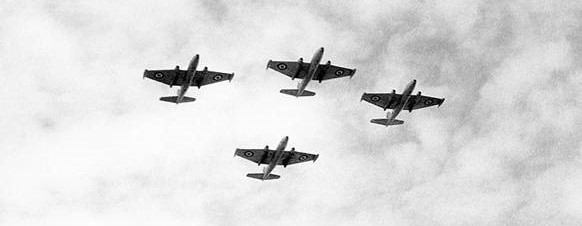
RAAF Air Shows.
Back in 1971, when our world was a peaceful and healthy place in which to live, the Air Force used to run lots of air shows. People would stream onto Bases all over the country and get up close and personnel to different types of aircraft, would watch them perform, drink a Coke and/or eat a pie and happily go home afterwards having spent a very enjoyable day. To get onto a Base it wasn’t necessary to fill in a million forms, get bused from the gate to where-ever, be herded from here to there like sheep or be watched over by a multitude of uniforms. People would come, bringing their rugs and umbrellas, sit on the grass and be asked not to wander and they wouldn’t. People were trusted, there was respect and they obeyed.
Sadly – that’s all gone. The nasties have taken control of our country and everything has changed.
Just to show you what it used to be like, here are some videos of an air show that was held at Richmond back in 1971. Unfortunately there’s no sound, but the vision is ok and if you were ever posted to Richmond, these will surely bring back some fond memories. It used to be a great vibrant Base, not any more, everyone’s left!!
Double Consecration Ceremony at Townsville.
On the 22nd August, 2010, a rare double consecration ceremony was performed at RAAF Townsville. Her Excellency the Governor-General, Ms Quentin Bryce AC, was the Reviewing Officer for the ceremonial parade at which No 1 Airfield Operations Support Squadron (1AOSS) Standard and No 27 (City of Townsville) Squadron Governor General’s Banner were consecrated by the Principal Air Chaplains.
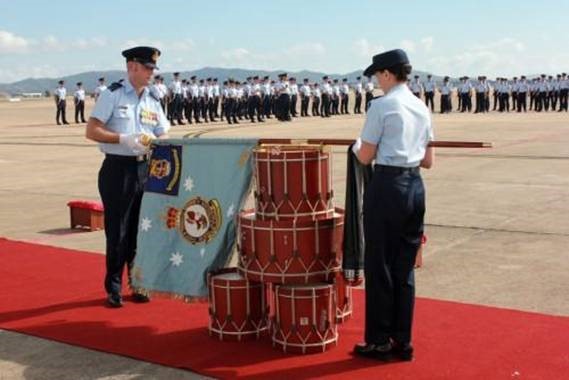
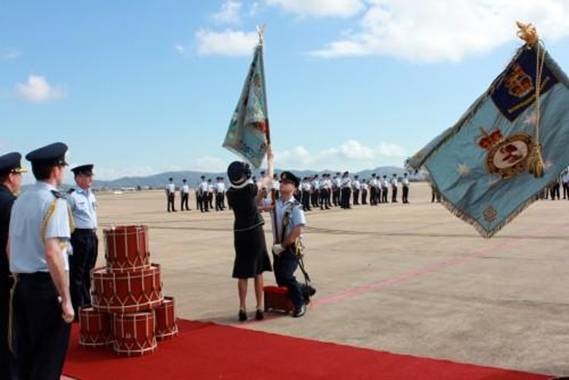
One hundred and five 1AOSS members were on parade, with 35 having travelled from detachments at Pearce, Edinburgh, Richmond, Williamtown and Darwin, as well as Orchard Hills. A number of previous 1AOSS and 1CLS, 1ATS and 1OSU (the pre-ceding units of 1AOSS) members were present, including Ken Feather who was one of the 1OSU members who deployed to Vung Tau as a cook during the Vietnam War (May 1970 – Dec 1971). Sadly, Ken passed away at the Mater Hospital, Townsville, on the 18 July 2012. He was only 64 years old.
Following the parade, the Governor-General, all personnel and guests were invited to a morning tea at the Wirraway Club on base. 27SQN personnel and their families followed this with an informal gathering in the Sergeants’ Mess, while 1AOSS members, along with families and past unit members, enjoyed a barbecue at the 1AOSS pre-deployment area.
A Squadron Standard is awarded to operational squadrons of the RAAF with more than 25 years of service or combat distinction, while the Governor General’s Banner is awarded to a non-operational unit in recognition of more than 25 years of distinguished service.

Never buy a cocker spaniel when you’re drunk.
Back Go to page: 1 2 3 4 5 6 7 8 9 10 11 12 13 14 15 16 17 18 19 20 Forward